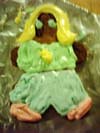It's a rare writer that can make an atom personable. Based on our science books, an atom is a nucleus made up of protons and neutrons, surrounded by electrons. They combine into molecules, which then combine with other molecules, which then becomes the reason I failed chemistry class. If we rely on a textbook, of course an atom is going to be a dead thing.
It's too bad that our text books aren't written by Bill Bryson, author of A Short History of Nearly Everything and many other fine works. Bryson can give an atom life of it's own, a personality, the entirely real sense that atoms are the most important part of our lives. It's not just a numbered figure on an impersonal page.
Bryson, an immensely talented writer, brings all of science to life in this book, a rare feat. He disabuses us of the notion of eternal truths, for example, demonstrating that until just the middle of the last century plate tectonics was not accepted as a viable theory. He destroys the archetype of the all-knowing scientists and shows them at their most vulnerable and ingenious. Most disturbingly, he lays out all of the myriad ways that our planet and universe is trying to kill us.
As you can probably guess, I am a science dumbass. I scraped through three years of high school science and two semesters of similar college classes with smiles and a cheerfully frank self-assessment that though I may try my hardest, I am never going to successfully balance a chemical equation or triangulate the distance to the moon. With Bryson, however, I am introduced to the personalities behind the theorems: venerable, yet staid Lord Kelvin, egotistical Hubble, prickly Newton, thieving Hooke, and (my favorite) painfully shy Cavendish. Science is more than just fact and theory-- it is a violent clashing of egos and dogma, a bureaucratic beast as slow-moving as religion itself.
It will take more than a few reads to truly understand the science portrayed in A Short History of Nearly Everything, though Bryson has made a valiant effort to make everything readable. Looking on Amazon, it appears that he has come out with an illustrated edition of the book, for which I may need to shell out some cash. It's strange that for a girl that can't tell a mitochondria from a nucleus, such a work can become a favorite work and occupy a coveted spot on the bookshelf.
Subscribe to:
Post Comments (Atom)








No comments:
Post a Comment